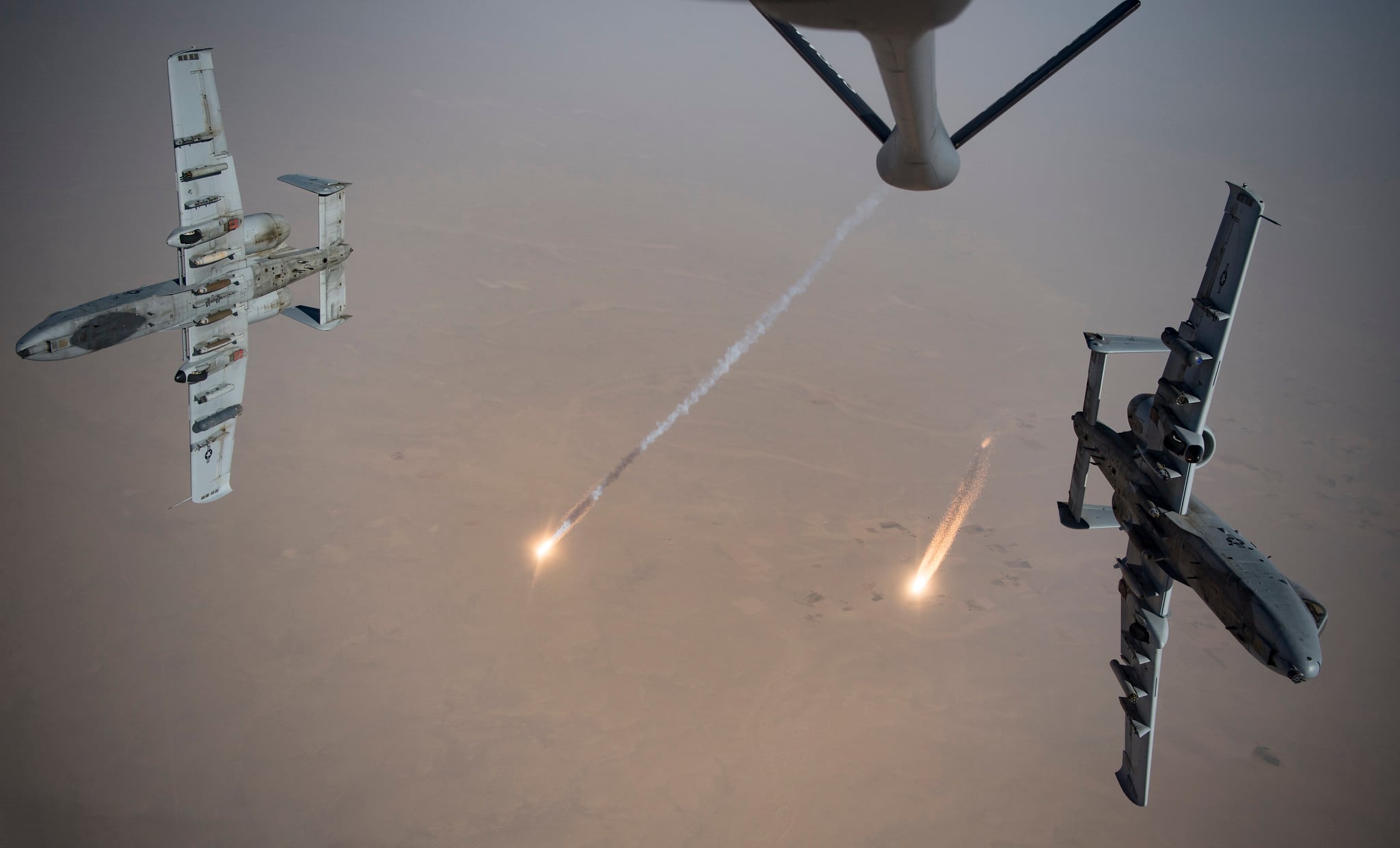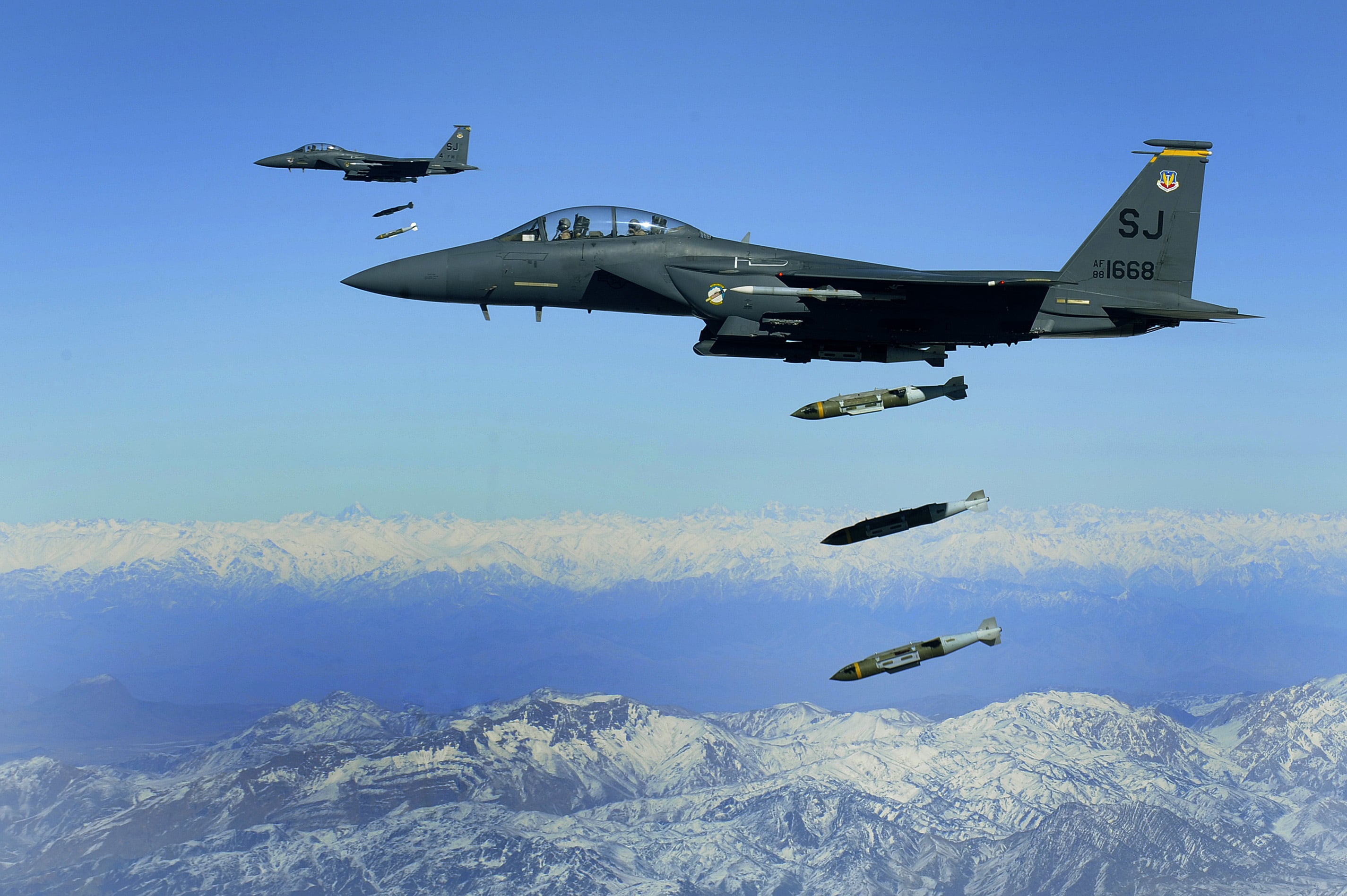As peace negotiations between the Taliban and U.S. unraveled, the U.S. dramatically ramped up its air campaign against militants in Afghanistan.
According to U.S. Air Forces Central Command, U.S. aircraft dropped 948 munitions in Afghanistan during the month of September.
That’s the highest number of munitions dropped for a single month since October 2010 — near the height of America’s involvement in the 18-year long war. In October 2010, according to figures provided by AFCENT, U.S. and coalition aircraft dropped roughly 1,043 munitions.
The U.S. had nearly 100,000 troops on the ground by October 2010, as part of then-President Barrack Obama’s troop surge. Today, there are roughly 14,000 service members operating in Afghanistan.
RELATED

The spike in bombs released show a dramatic escalation of American air power aimed at militants following the collapse of peace negotiations with the Taliban in early September. In August, the U.S. dropped 783 munitions.
Secretary of Defense Mark Esper confirmed that the U.S. had increased its attacks against the Taliban in an Oct. 5 interview with reporters.
“We did step up our attacks on the Taliban since the talks broke down. You know, the president spoke about this publicly — we did pick up the pace considerably,” Esper told reporters in early October.
At a Pentagon 9/11 ceremony Trump said that the U.S. was hitting the enemy in Afghanistan “harder than they have ever been hit before.”
President Donald Trump ended negotiations with the Taliban in September following a suicide attack in Kabul that killed a U.S. service member.

At the end of August and through early September, Taliban fighters launched brazen attacks against Kunduz and other urban centers across Afghanistan.
The Taliban failed to capture any cities during the attacks, but a military official told Military Times that B-52s were postured to provide support if needed.
In September, Secretary of State Pompeo said nearly 1,000 Taliban fighters were killed over a 10-day period. Afghan President Ashraf Ghani estimated the Taliban lost nearly 2,000 fighters in its failed attempt to capture an Afghan city.
The Taliban still hold considerable sway over much of rural Afghanistan following their ouster from power in 2001.
The Associated Press reported that the Taliban met the U.S. envoy for Afghanistan peace negotiations Zalmay Khalilzad on Oct. 4 in Pakistan. It was the first meeting between the Taliban and the Khalilzad since peace talks ended.
Shawn Snow is the senior reporter for Marine Corps Times and a Marine Corps veteran.





